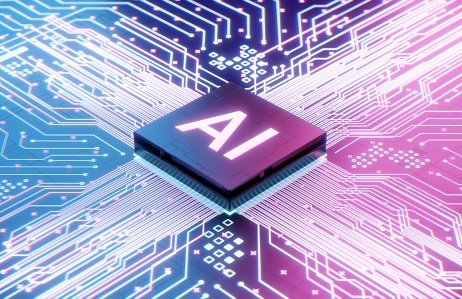The Role of Artificial Intelligence in Emergency Medicine
Artificial Intelligence (AI) is revolutionizing emergency medicine by enhancing diagnostic accuracy and speed, crucial in the high-pressure environment of emergency departments (EDs). AI algorithms analyze vast medical data swiftly, aiding quicker, informed decisions. AI-powered imaging tools accurately interpret radiological images, identifying abnormalities often missed by humans. Additionally, AI improves triage processes using Machine Learning to assess patient data, predict condition severity, and prioritize urgent cases, streamlining patient flow and potentially saving lives. AI’s predictive analytics analyze data to forecast patient outcomes and tailor interventions, enhancing treatment efficacy. It also optimizes ED operations by predicting patient influx patterns, aiding resource allocation, and managing staff schedules to meet demand. Despite challenges like data privacy concerns and AI tool validation, AI’s benefits in improving diagnostics, operations, and patient outcomes highlight its transformative potential. As AI evolves, its impact on emergency medicine will likely expand, advancing patient care and healthcare delivery.
Understanding AI in Healthcare
AI is revolutionizing healthcare by offering innovative solutions that enhance patient care, optimize operations, and improve decision-making. Key technologies include machine learning, natural language processing, robotics, and computer vision, which help analyze complex medical data. AI systems mimic human cognition to improve medical outcomes, aiding in disease diagnosis, outcome prediction, and treatment personalization. A primary application is in medical imaging, where AI analyzes X-rays, MRIs, and CT scans with high accuracy, often surpassing human experts, thus expediting diagnoses and reducing errors. AI also enhances predictive analytics by analyzing large datasets to identify patterns, allowing for early detection and proactive interventions. Additionally, AI facilitates personalized medicine, tailoring treatments to individual patients by integrating genomic and health data. Despite its promise, AI’s implementation faces challenges like data privacy, algorithmic bias, and computational demands. Addressing these issues is crucial for AI to seamlessly integrate into healthcare systems, revolutionizing diagnostics, personalized medicine, and operational efficiency.
Key Applications of AI in Emergency Medicine
AI integration in emergency medicine is revolutionizing patient care, diagnostics, and efficiency. Key applications include:
Predictive Analytics: AI forecasts patient admissions and manages ED flow by analyzing data trends, optimizing resource allocation, and reducing wait times (Source A).
Early Diagnosis and Risk Stratification: AI rapidly processes data for early diagnosis and risk assessment, crucial for conditions like strokes or heart attacks, improving intervention speed and outcomes (Sources B, C).
Decision Support Systems: AI enhances clinical decision-making by offering real-time recommendations based on patient data and guidelines, reducing diagnostic errors (Source D).
Natural Language Processing (NLP): NLP streamlines documentation and communication by extracting data from EHRs and summarizing patient information, improving care coordination (Source E).
Telemedicine and Remote Monitoring: AI analyzes wearable device data for remote monitoring, alerting clinicians to changes in chronic conditions and facilitating remote consultations (Source F).

Kaynak: www.news-medical.net
Overall, AI is significantly enhancing emergency medicine’s predictive, diagnostic, and management capabilities.
Enhancing Patient Care with AI
AI is revolutionizing emergency medicine by boosting diagnostic accuracy, streamlining workflows, and personalizing treatments. AI systems analyze vast data quickly, aiding emergency personnel in making informed decisions. AI enhances diagnostics through machine learning algorithms that interpret medical images like X-rays and MRIs faster and with high accuracy, often surpassing human radiologists. This speed is crucial in emergencies, expediting treatment for conditions like strokes and improving outcomes.
AI also improves triage by analyzing electronic health records to predict patient deterioration, allowing prioritization of critical cases and potentially saving lives. Furthermore, AI supports personalized medicine by integrating diverse data to recommend tailored treatments, enhancing efficacy and minimizing adverse reactions.
Operationally, AI automates administrative tasks, reducing healthcare providers’ burdens and optimizing staffing and resource allocation. Overall, AI’s integration into emergency medicine is transforming patient care, and as technology advances, its impact is expected to grow, further enhancing outcomes and efficiency.
AI Technologies Transforming Emergency Departments
AI is revolutionizing emergency departments (EDs) by improving medical care efficiency and accuracy. Key AI technologies include machine learning algorithms, which analyze medical data to predict patient outcomes and manage resources effectively. Natural Language Processing (NLP) enhances decision-making by extracting information from clinical notes, reducing documentation burdens, and alerting teams to emergencies. Computer vision aids in rapid imaging analysis for conditions like fractures, supporting timely decisions. Predictive analytics assess data to foresee patient deterioration, enabling proactive care. Robotics and automation assist in surgeries and logistical tasks, improving precision and reducing errors. Virtual health assistants streamline patient interactions and communication, easing staff workloads and enhancing patient satisfaction. Overall, AI is transforming EDs by optimizing resource allocation, diagnostic accuracy, and patient care, with the potential for further advancements in emergency medicine.
Machine Learning and Data Analytics
Machine learning and data analytics are transforming emergency medicine by improving patient outcomes and streamlining operations. As emergency departments face increasing patient volumes and the need for rapid diagnoses, these technologies prove invaluable. Machine learning algorithms analyze data more quickly and accurately than human clinicians, crucial in emergency settings where time is critical. They can predict patient deterioration by analyzing vital signs and lab results, enabling timely interventions, and assist in diagnostics by comparing patient data with extensive medical records. Data analytics optimizes emergency department efficiency by predicting peak times and optimizing staffing, reducing wait times, and identifying trends for better resource allocation. Integrating machine learning into electronic health records enables real-time data processing and alerts for early intervention in conditions like sepsis or stroke. Personalized medicine benefits as machine learning tailors treatments to individual patients. Challenges include ensuring data privacy, overcoming biases, and integrating systems into workflows. Overall, these technologies enhance diagnostic accuracy, operational efficiency, and patient care.
Natural Language Processing in Emergency Medicine
Natural Language Processing (NLP) is transforming emergency medicine by improving data management, patient interaction, and decision-making. As a subfield of artificial intelligence, NLP enhances the extraction and analysis of unstructured data from electronic health records (EHRs), such as clinical notes and discharge summaries. This automation reduces manual data entry time and ensures clinicians have accurate patient information, crucial for timely decisions in high-pressure settings. Additionally, NLP assists in patient triage by analyzing symptoms and historical data to prioritize cases based on urgency, benefiting overcrowded emergency departments. NLP also facilitates communication between healthcare providers and patients with language barriers through real-time translation services, impacting patient outcomes positively. Furthermore, NLP monitors and predicts trends by analyzing data from social media and public health records, helping emergency departments prepare for potential health threats. As NLP technology advances, its integration into emergency medicine promises to optimize care delivery and improve patient outcomes.

Robotics and Automation
Robotics and automation are revolutionizing emergency medicine by improving efficiency and patient outcomes. Automation in emergency departments (EDs) reduces human error, minimizes delays, and optimizes resource allocation. Robots with AI capabilities handle routine tasks like transporting medical supplies, allowing medical staff to focus on patient care. Surgical robots perform complex procedures with precision, leading to quicker recoveries and shorter hospital stays. AI-powered systems enhance triage processes by analyzing patient data, prioritizing cases, and suggesting interventions, ensuring timely attention in high-volume settings. Additionally, AI-driven robots assist in diagnostic processes, providing rapid interpretations of X-rays and CT scans, crucial for time-sensitive diagnoses. These advancements promise to enhance emergency medicine by improving response times and reducing healthcare professionals’ workloads, ultimately delivering higher-quality care. The ongoing Innovation suggests a future where EDs are more efficient and effective, meeting the growing demands of modern healthcare systems.
Benefits of AI in Emergency Medicine
AI is revolutionizing emergency medicine by enhancing efficiency, accuracy, and patient outcomes. Key benefits include improved diagnostic accuracy, where AI systems analyze imaging data like CT scans with precision, often detecting abnormalities missed by humans. This is crucial in emergencies where time and accuracy are vital. AI also enhances decision-making by offering evidence-based recommendations through decision support tools, reducing doctors’ cognitive load and minimizing errors. In triage, AI algorithms prioritize patient treatment based on severity, ensuring critically ill patients receive immediate attention, optimizing resource allocation. Predictive analytics in AI forecast patient outcomes, allowing for proactive interventions that improve care. Operational efficiency is boosted as AI automates administrative tasks, letting medical staff focus more on patient care, reducing wait times, and increasing satisfaction. AI also enables personalized care by tailoring treatments to individual needs, analyzing genetic information, medical history, and current health status. Overall, AI’s integration into emergency medicine promises better patient outcomes and more efficient healthcare delivery.
Increased Efficiency and Speed
AI is revolutionizing emergency medicine by enhancing efficiency and speed, crucial in time-sensitive situations. AI systems streamline processes in emergency departments (EDs), improving patient outcomes. Machine learning algorithms in triage systems quickly assess patient urgency using electronic health records and vital signs, allowing healthcare professionals to focus on care delivery. AI diagnostic tools rapidly analyze medical imaging, such as X-rays or CT scans, detecting anomalies with high accuracy, reducing human error, and ensuring timely interventions. AI also optimizes workflow management in EDs through predictive analytics, forecasting patient influx, and enabling effective resource allocation to reduce bottlenecks. Additionally, AI-driven virtual assistants automate routine tasks like patient registration and discharge, freeing up healthcare providers for complex duties. The integration of AI in emergency medicine is transforming the field by increasing operational efficiency and speeding up care delivery, with AI’s role expected to grow as technologies advance.
Improved Accuracy and Precision
AI is revolutionizing emergency medicine by enhancing diagnostic accuracy and precision. AI algorithms analyze vast medical data swiftly, identifying patterns and predicting health outcomes more accurately than humans. Machine learning models, a subset of AI, excel in this, crucial for emergencies where quick, precise decisions are vital. AI also improves diagnostic imaging, analyzing X-rays, CT scans, and MRIs with high precision, often detecting anomalies unnoticed by humans. This capability is essential for identifying critical conditions like strokes or internal bleeding. Additionally, AI’s predictive analytics use historical and real-time data to foresee medical events, allowing proactive interventions and reducing complications. AI-driven decision support systems tailor treatment plans to individual patient data, ensuring effective, personalized care and reducing trial-and-error. In summary, AI’s data processing, imaging analysis, event prediction, and personalized treatment significantly enhance emergency medical care’s accuracy and precision, promising even greater advancements as AI evolves.
Cost-Effectiveness
AI is revolutionizing emergency medicine by enhancing cost-effectiveness and care quality. It optimizes resource allocation through predictive algorithms, anticipating patient inflow and case severity, allowing efficient staff and resource management, reducing overtime and temporary staff costs. AI diagnostic tools minimize unnecessary tests, cutting costs and reducing patient risks. By identifying early signs of patient deterioration, AI enables timely interventions, preventing complications, shortening hospital stays, and reducing intensive care needs, thus lowering healthcare costs. AI also facilitates cost-effective training via simulations and virtual reality, reducing on-site training expenses and improving staff preparedness. Additionally, AI streamlines administrative tasks like patient check-ins and billing, reducing overheads and freeing healthcare providers to focus on patient care. Overall, AI’s integration in emergency medicine optimizes resources, reduces unnecessary procedures, improves outcomes, enhances training, and automates administration, ensuring high-quality, financially sustainable emergency care.
Challenges and Ethical Considerations
Integrating AI into emergency medicine presents challenges and ethical concerns that must be addressed for safe, equitable care. A major challenge is AI reliability, as biases in training data can lead to biased patient outcomes, especially affecting underrepresented groups. The “black box” nature of AI models, particularly deep learning, complicates interpretability, making it hard for clinicians to trust AI recommendations without understanding the rationale, crucial in emergency settings. Patient privacy and data security are also critical, given the risk of breaches involving sensitive information, necessitating robust protection measures and compliance with regulations like HIPAA. AI could exacerbate healthcare inequalities if not managed carefully, potentially widening access and quality gaps across socio-economic groups. Accountability is another issue, as determining liability in AI-influenced clinical decisions can be complex. Clear guidelines are needed to delineate responsibilities among AI developers, healthcare providers, and institutions. Ongoing dialogue among stakeholders is essential to ensure AI is used responsibly and equitably.
Data Privacy and Security
AI integration in emergency medicine offers transformative potential but raises significant data privacy and security concerns. AI systems process vast amounts of sensitive health data, necessitating stringent privacy measures to prevent unauthorized access and breaches. Compliance with regulations like HIPAA is crucial, requiring AI systems to incorporate privacy by design principles, robust encryption, and access controls. Balancing data utility and privacy is key, with techniques like data anonymization and differential privacy allowing AI to learn without compromising individual privacy.

AI systems are vulnerable to adversarial attacks, necessitating continuous monitoring to detect threats. Collaboration among healthcare, technology, and regulatory sectors is essential to establish trustworthy frameworks. Transparent policies and patient communication can enhance trust in AI technologies. Addressing these challenges ensures AI’s safe and transformative integration into emergency medicine, improving patient outcomes and operational efficiency while safeguarding privacy and security.
Bias and Fairness in AI Systems
As AI becomes integral to emergency medicine, addressing bias and fairness is crucial. AI systems in healthcare are prone to biases, often due to non-representative training data, which can negatively impact patient outcomes. If an AI model is trained on data reflecting historical biases or lacking diversity, it may perpetuate these biases, leading to unequal patient treatment. For example, AI trained mainly on one ethnic group’s data may misdiagnose patients from other backgrounds, worsening healthcare disparities.
AI algorithms can also introduce bias, prioritizing efficiency over fairness, which is concerning in emergency settings where equitable treatment is vital. To counter these issues, diverse datasets should be used in training, and fairness constraints integrated into algorithms. Regular audits and bias testing are essential to identify and fix biases. Transparency in AI decision-making is also key, enabling clinicians to understand AI recommendations and fostering trust. Ensuring AI is fair and unbiased will enhance patient outcomes and support ethical AI use in healthcare.
Integration with Existing Systems
Integrating AI into emergency medicine systems offers significant benefits but also poses challenges. Key to successful integration is ensuring AI’s interoperability with existing electronic health records (EHRs), which are vital for accessing real-time patient data. This enables AI algorithms to provide timely insights, enhancing patient care. AI tools should complement existing workflows in emergency departments (EDs), where efficiency is crucial. Intuitive AI applications can support decision-making without adding complexity, such as aiding in triage by prioritizing care based on patient severity. Data security is another critical aspect, with AI systems needing to comply with regulations like HIPAA to protect patient information. Secure data exchange is essential for safeguarding sensitive data while allowing AI to function effectively. Additionally, healthcare professionals require training to use AI tools effectively, understand their limitations, and interpret results accurately. Addressing these considerations will allow AI to enhance emergency departments’ capabilities and improve patient outcomes.
Future Prospects of AI in Emergency Medicine
The future of AI in emergency medicine is promising, with advancements poised to enhance patient care, streamline operations, and improve outcomes. AI is expected to significantly enhance diagnostic accuracy and speed through sophisticated algorithms, enabling rapid identification of critical conditions like strokes and heart attacks. Integrating AI with imaging technologies could further refine diagnostics, reduce human error, and improve patient care. Additionally, AI is set to revolutionize personalized medicine by tailoring treatment plans to individual patients using vast datasets, optimizing resource utilization in emergency departments. Predictive analytics can forecast patient volumes and resource needs, providing actionable insights for efficient resource allocation, crucial during crises. AI’s integration with wearable devices will allow continuous health monitoring, enabling early detection of health issues and faster emergency responses. However, ethical and regulatory considerations, including patient privacy and data security, will be essential to guide AI’s development and ensure its safe, effective, and equitable implementation in emergency medicine.
Emerging Trends and Innovations
Artificial intelligence (AI) is revolutionizing emergency medicine by enhancing patient care, streamlining operations, and improving outcomes. AI-driven diagnostic tools assist in faster, more accurate diagnoses by analyzing vast datasets to identify patterns and predict health issues. For instance, AI can analyze medical imaging with precision, crucial for immediate conditions like strokes (Source 1, 2). AI also aids in developing personalized treatment plans by analyzing medical history and real-time data, which is particularly beneficial in emergencies (Source 3). AI-powered virtual assistants and chatbots in triage systems help manage patient flow, reducing staff burden and prioritizing urgent cases (Source 4). Predictive analytics forecast patient admission rates, aiding in efficient resource allocation and mitigating overcrowding (Source 5). Additionally, AI enhances telemedicine, providing remote consultations and extending emergency services’ reach, especially in underserved areas (Source 6). These innovations promise to further improve healthcare delivery efficiency and effectiveness as AI technology evolves (Source 7).
The Road Ahead: Research and Development
The integration of artificial intelligence (AI) into emergency medicine presents both opportunities and challenges, with future advancements relying heavily on research and development. Key areas of focus include enhancing machine learning algorithms to improve diagnostic accuracy and efficiency, particularly across diverse patient populations. Efforts are directed towards developing robust datasets that consider demographic and socio-economic factors to better train AI systems. Additionally, there’s a push for AI solutions capable of real-time operation, crucial for the fast-paced emergency environment. This necessitates advancements in computational power and algorithm efficiency, potentially utilizing edge computing to bring AI closer to the point of care.

The integration of AI with technologies like wearable devices and IoT offers opportunities for real-time patient monitoring, requiring seamless interfaces and communication protocols. Ethical and regulatory frameworks are also critical, ensuring patient safety, data privacy, and accountability. Interdisciplinary collaboration across computer science, medicine, ethics, and law is essential to address AI’s multifaceted challenges and ensure its safe, efficient, and equitable implementation in emergency medicine.
Preparing for the AI-Driven Future
Preparing for an AI-driven future in emergency medicine involves key steps: education, infrastructure, ethics, regulation, and collaboration. Healthcare professionals must acquire skills to use AI effectively through AI-focused curricula in medical education, emphasizing technical skills and critical thinking. Infrastructure development is crucial, requiring upgrades to IT systems, seamless EHR integration, and investment in data storage and cybersecurity. Ethical considerations include establishing guidelines for AI use, maintaining transparency, accountability, and patient privacy. Regulatory compliance involves adhering to evolving regulations like HIPAA and FDA guidelines, necessitating dedicated compliance teams. Collaboration with AI developers and researchers is essential for innovation, enabling continuous refinement of AI technologies. By participating in research and pilot programs, healthcare institutions can contribute to AI advancements and remain at the forefront of medical innovation. Addressing these areas ensures healthcare providers are ready to leverage AI’s transformative potential, ultimately improving patient outcomes in emergency medicine.
Conclusion
AI is transforming emergency medicine by enhancing patient care, optimizing operations, and improving clinical outcomes. AI-driven technologies address challenges like patient triage, diagnostic accuracy, and resource allocation. AI streamlines triage by using algorithms to prioritize patients based on condition severity, improving outcomes and reducing healthcare professionals’ administrative burden. AI tools also enhance diagnostic precision by assisting in interpreting complex medical data, such as imaging, with high accuracy, reducing errors and accelerating diagnostics. In resource management, AI’s predictive analytics forecast patient influx, aiding in efficient staff and resource allocation, mitigating overcrowding, and reducing wait times. Despite these benefits, AI integration poses challenges like ensuring patient privacy and data security. Ongoing training for healthcare professionals is essential to effectively use AI insights. While AI revolutionizes emergency medicine in triage, diagnostics, and resource management, a balanced approach considering ethical implications and training is crucial for successful implementation. AI’s potential in emergency medicine promises more efficient, effective, and equitable patient care.
Summary of AI’s Impact on Emergency Medicine
AI is transforming emergency medicine by improving diagnostic accuracy, patient management, and resource allocation. It rapidly analyzes medical data, enhancing diagnosis speed and precision, such as detecting strokes from imaging data with high accuracy. AI also optimizes triage processes using predictive analytics to prioritize urgent cases, improving outcomes and reducing wait times. It automates routine tasks like data entry, allowing healthcare professionals to focus on patient care, thus boosting efficiency and reducing staff burnout. AI-driven decision support systems offer evidence-based recommendations, aiding clinicians in making informed decisions and personalizing treatment plans. Additionally, AI predicts healthcare trends and potential outbreaks, enabling emergency departments to prepare for patient surges, improving public health response. AI’s impact on emergency medicine is profound, enhancing diagnostic accuracy, patient management, and operational efficiency. As AI evolves, its role in emergency medicine is expected to grow, revolutionizing healthcare delivery in critical settings.
Summary
Artificial Intelligence (AI) is transforming the landscape of emergency medicine by enhancing diagnostic accuracy, streamlining patient triage, and optimizing treatment protocols. Through the integration of machine learning algorithms, AI systems can swiftly analyze vast amounts of medical data to identify patterns and predict patient outcomes with unprecedented precision. This technological advancement allows healthcare providers to make faster, more informed decisions in high-pressure environments, ultimately improving patient care and reducing mortality rates. AI-powered tools, such as computer vision for imaging and natural language processing for electronic health records, further augment the capabilities of emergency departments by reducing human error and expediting administrative tasks. As AI continues to evolve, its role in emergency medicine is expected to expand, paving the way for more personalized and efficient healthcare delivery. This revolution not only enhances the quality of care but also alleviates the burden on medical professionals, allowing them to focus on the critical aspects of patient interaction and care.
